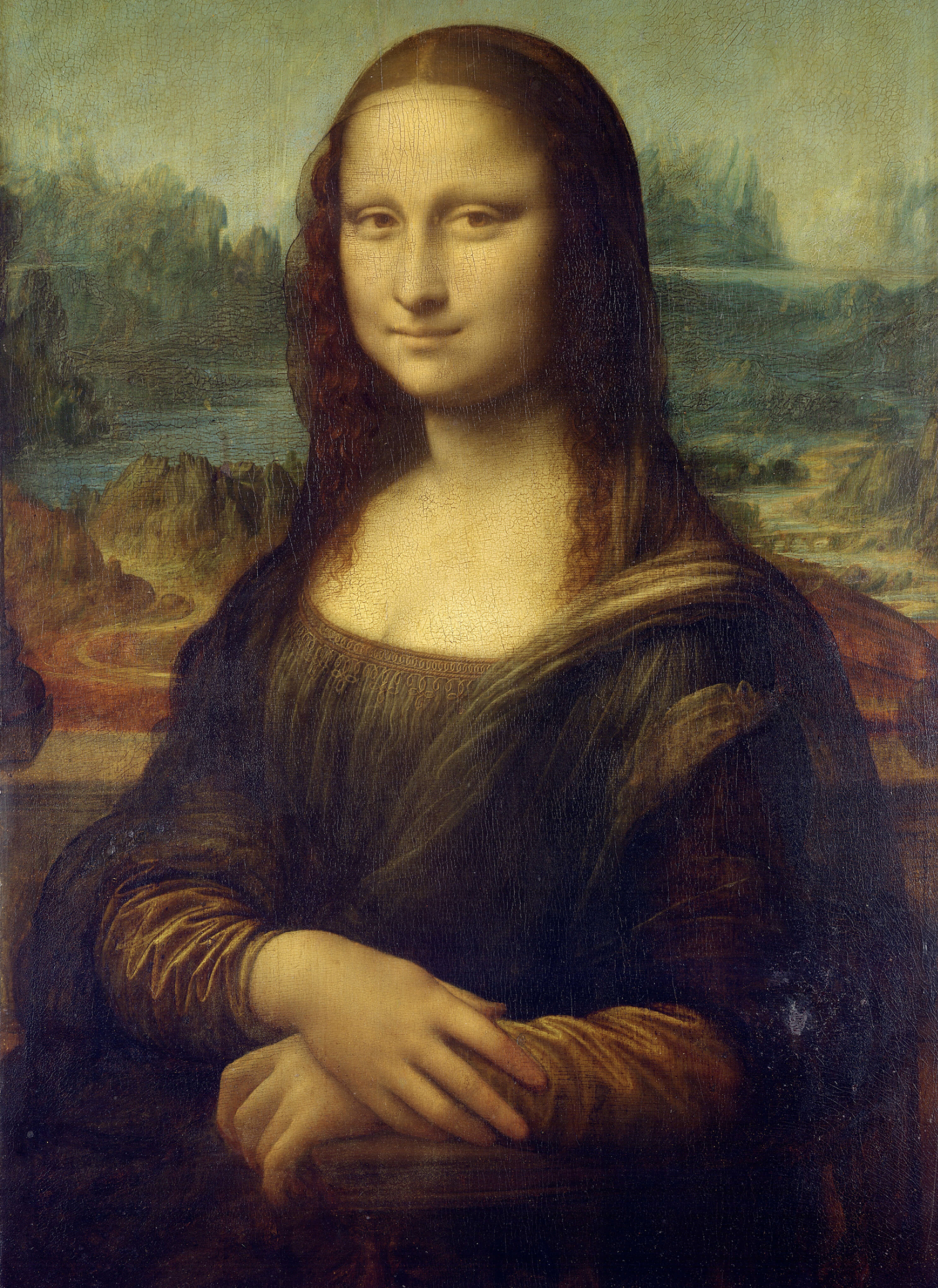“Just imagine the unexplored beauty around you; explore it- it turns you into a more beautiful being”
Sufi
“All in the world know the beauty of the beautiful, and in doing this they know what ugliness is”
Lou Tzu
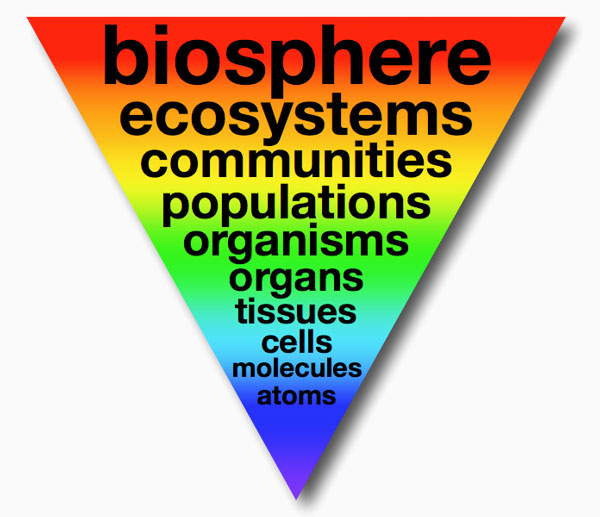
Humans are evolutionarily wired and predisposed to admire and desire beauty. Have you ever wondered, how did this complex experience evolved from a collection of fundamental building blocks, atoms and molecules?
The major method of investigation in Western tradition has been reductionism, that is, to find out the most fundamental building blocks of reality. As in Ancient Greece, Democritus, a Greek philosopher developed the philosophical idea of an atom in 400 B.C.
Then later, the atomic particles theory, in the 19th century, by Dalton was developed, and now the most recent and agreed-upon approach is the Standard Model, the quantum field theory. From the quantum particles to social interactions, there are several layers of complexity, and in each layer there emerge different principles.
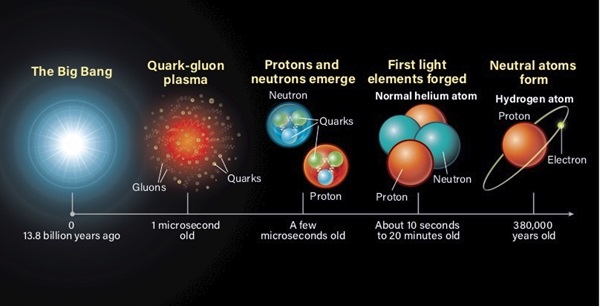
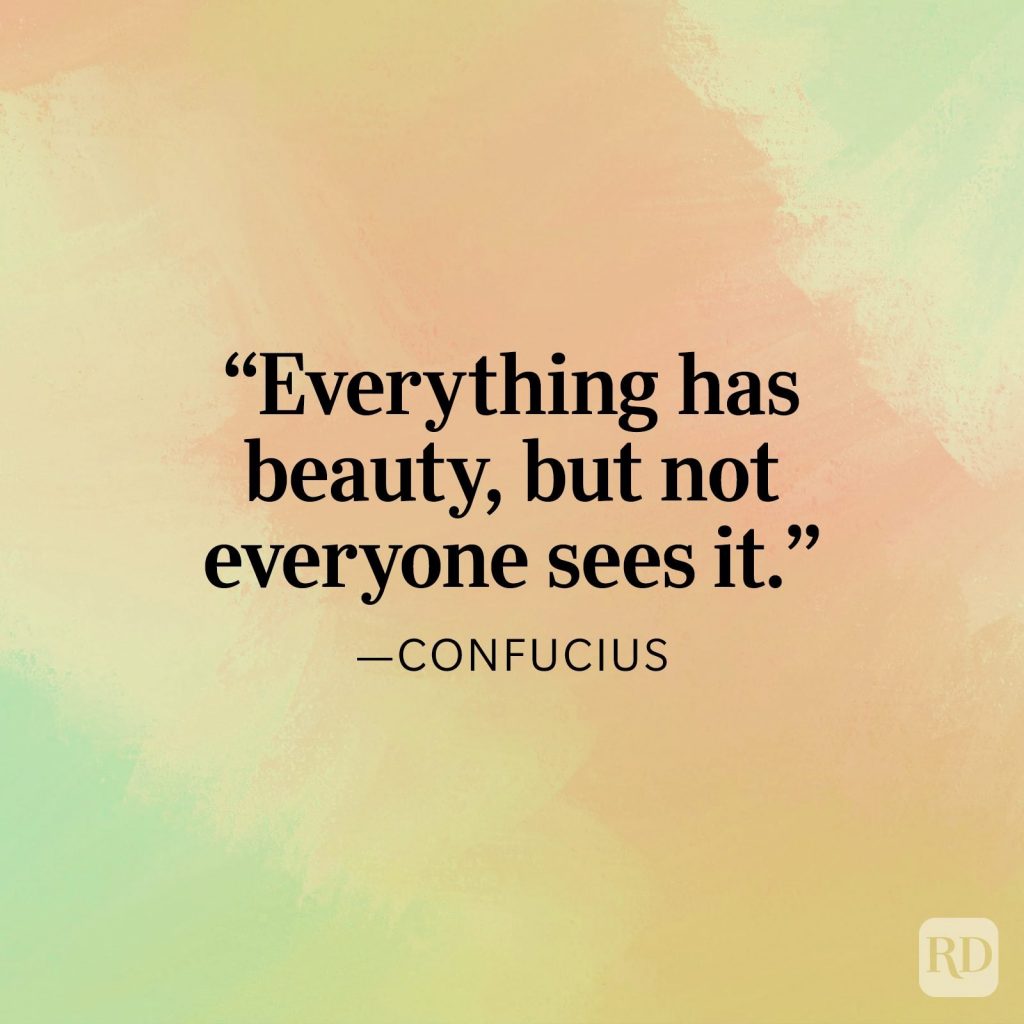
1– Quantum particles, fermions and quarks are at the base of the pyramid of complexity’s hierarchy.
2– Subatomic Particles The next layer is that of subatomic particles like protons, neutrons, and electrons.
3– Atoms These are the elementary particles of matter. At present, there are 118 different kind of atoms out of which 92 are naturally occurring and 26 are man made.The smallest atom is that of Hydrogen with one proton; and the heaviest is that of** Oganesson** containing 118 protons.

4-**Molecules ** They are the different combinations of atoms, chemically combined. They can be either organic or inorganic.
5– Organelles The organic molecules combine together to make specialized subunits in the cell with a specific function called organelles.
6- Cell It is the building block of all living things, except viruses- the acellular structure, nonliving particles, can only reproduce inside of living cells.
7– Tissues These are the combinations of same or different kinds of cells, like skin, muscles, heart, etc.
8- Organs These are the combinations of tissues which form a structural unit with a common function.
9– Biological System is a complex network of biological entities from a macro to a nanoscopic scale.
**10- Organism **is an individual entity having all the properties of life.
**11- Social Units **are groups of units, from family, groups and tribes, to society. It is the most complex form of life in animals as Humans.
*12- The Human Brain, ***is the most marvelous creation of nature. It is the ultimate complex of nature that ever evolved.
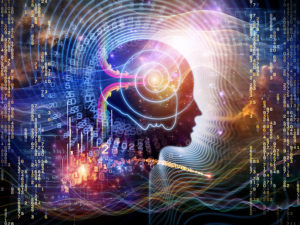
Arrangement of human feature lines and symbolic elements on the subject of human mind consciousness imagination science and creativity
13-Consciousness It is the emergent property of the function of the brain and one of the greatest mysteries of nature. It is still under investigation for eons.
**My topic for today is beauty. The perceptual experience of the brain gives us pleasant feelings and we are prone to Admire and desire beauty, but the question is, why is this so?**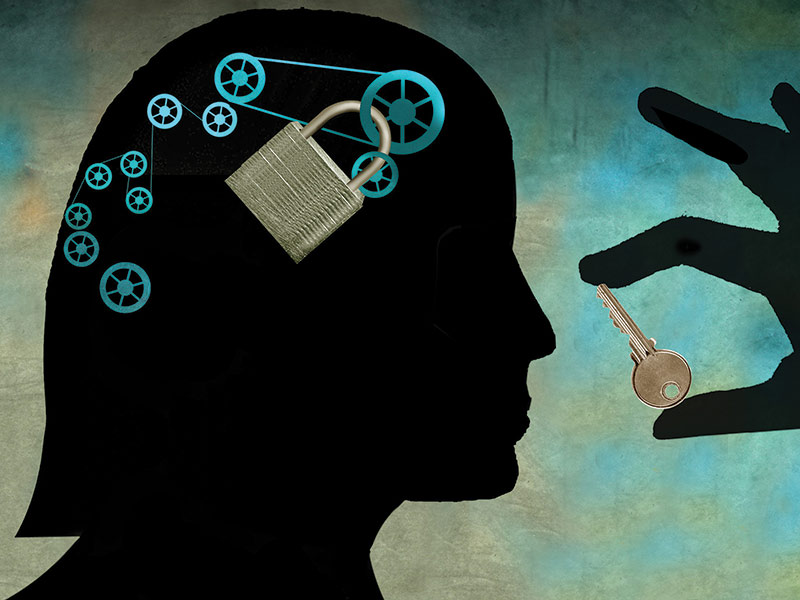
Humans desire and admire beauty for several reasons, including biological, cultural, and psychological factors. Biologically, humans are wired to seek out and appreciate beautiful things. It is believed that this preference for beauty has evolutionary roots, as it may have helped our ancestors to identify healthy mates and fertile breeding partners.
Culturally, beauty is often associated with status and power. Throughout history, people in position of power have often been depicted as beautiful or have sought to embody beauty through clothing, jewelry, and other adornments. In many cultures, beauty is also linked to ideas of morality and goodness, with beautiful people seen as more trustworthy and virtuous.
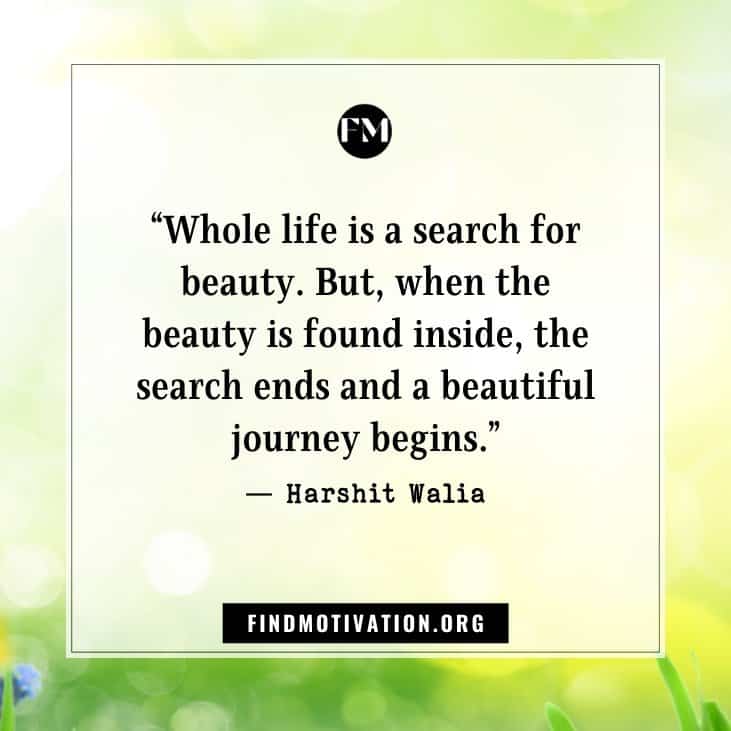
The Characteristics of Beauty
The characteristics of beauty can vary depending on the context, culture, and individual preferences, but some common characteristics include:
1- Symmetry and Proportion: Symmetry refers to a balanced arrangement of elements, while proportion refers to the relative size and scale of those elements. Both symmetry and proportion are often associated with beauty because they create a sense of order and harmony.
2- Harmony and Unity: Harmony refers to the pleasing arrangement of colors, shapes, and other elements, while unity refers to the sense that all of the elements belong together. Both harmony and unity are often associated with beauty because they create a sense of completeness and coherence.
3- Complexity and Simplicity: Beauty can be found in both complex and simple forms, depending on the context. In some cases, complexity can be beautiful because it offers a sense of richness and depth, while in other cases, simplicity can be beautiful because it offers a sense of clarity and elegance.
4- Contrast and Variety: Contrast refers to the juxtaposition of different elements, while variety refers to the use of multiple elements to create interest and visual appeal. Both contrast and variety can be used to create beautiful compositions that catch the eye and hold the viewer’s attention.
5- Naturalness and Authenticity: Beauty can also be associated with naturalness and authenticity, meaning that it is not artificially created or manipulated. Naturalness and authenticity are often valued because they are seen as genuine and true.
**6-Pattern and Completion **are also characteristics of beauty that are often associated with symmetry and harmony.
Pattern refers to the repetition of elements in a design or composition. Patterns can be simple or complex, and they often create a sense of rhythm and order in a design. Patterns can be found in nature, such as the repeating shapes of leaves, as well as in human-made objects, such as the geometric patterns in textiles or tile designs.
Completion refers to the sense that a design or composition is whole or finished. When all the elements in a composition are in balance and working together, there is a sense of completion that is pleasing to the eye. Completion can be achieved through the use of symmetry, proportion, and harmony, as well as through the careful arrangement of elements in a design.
Both pattern and completion are important elements of beauty because they create a sense of order and coherence in a design or composition. They can help to guide the viewer’s eye and create a sense of balance and stability. At the same time, they can also provide a sense of interest and intrigue, as the viewer may be drawn in by the repetition and variation of patterns, or the sense of completeness and satisfaction that comes from a well-designed composition.
Overall, beauty is a complex and multifaceted concept that can be influenced by many factors, including cultural values, personal preferences, and the context in which it is experienced.
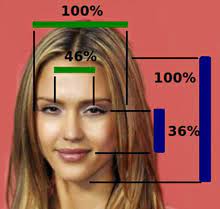
Psychologically, beauty is often associated with positive emotions and experiences. Research has shown that exposure to beautiful objects, people and environment can elicit feelings of pleasure, awe, and transcendence. These positive emotions may help to reduce stress, increase happiness, and promote well-being.
Overall, humans desire and admire beauty because it brings pleasure and satisfaction to them, and because it has been historically and culturally associated with positive traits and outcomes.
Inner Beauty:
1- Kindness: People who are kind and compassionate towards others are often seen as having inner beauty. This can include acts of generosity, empathy, and understanding.
2-Integrity: Those who have a strong sense of personal values and ethics, and who stick to their principles even in difficult situations, are often considered to have inner beauty.
3-Wisdom: People who have a deep understanding of the world around them, and who can offer insight and guidance to others, are often seen as having inner beauty. This can include wisdom gained through life experience, education, or spiritual practice.
4-Creativity: Those who have a unique and creative approach to life, and who are able to express themselves through art, music, or other forms of self-expression, are often admired for their inner beauty.
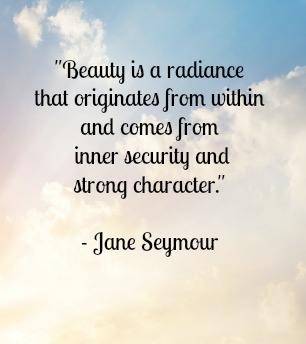
5-Resilience: People who are able to bounce back from difficult situations, and who have a strong sense of resilience and inner strength, are often seen as having inner beauty.
**6-Bravery and courage: **These involve the willingness to face challenges and adversity with strength and determination, often in the face of fear or danger. These qualities can be seen as beautiful because they inspire and uplift others, and can bring out the best in people in difficult situations.
7-Patience involves the ability to wait and endure difficult circumstances with calmness and perseverance. This quality is often associated with inner beauty because it requires strength of character and a deep sense of inner peace.
8-Tolerance is the ability to accept and respect the differences of others, even if they are very different from oneself. This quality is seen as beautiful because it promotes unity and harmony, and can help to bridge gaps between different cultures and communities.
9-Forgiveness is the ability to let go of anger and resentment, and to show compassion and understanding to those who have wronged us. This quality is seen as beautiful because it can bring healing and reconciliation to individuals and communities, and can help to foster a sense of peace and goodwill among people.
Inner Beauty of a Culture
When it comes to describing the inner beauty of a culture, similar qualities can apply. A culture that values kindness, integrity, wisdom, creativity, and resilience is often seen as having a rich and meaningful inner life. Additionally, these cultures place a high value on community, spirituality, and respect for nation.
Overall, these qualities all reflect a deep sense of inner strength, compassion, and wisdom, and are often seen as beautiful in both individuals and cultures.
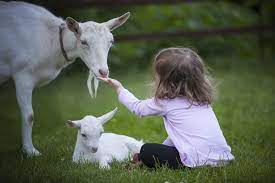
When Outer and Inner Beauty Harmonize
It can be a powerful combination that creates a sense of balance, authenticity, and radiance.
Outer beauty refers to a person’s physical appearance, which can include features such as facial symmetry, skin tone, and body shape. When a person takes care of their physical health, dresses in a way that reflects their personality and style, and uses makeup and grooming to enhance their natural beauty, they can project a sense of confidence and self-assurance that is attractive to others. Inner beauty, on the other hand, refers to a person’s character, values, and personality. When a person has qualities such as kindness, compassion, intelligence, and humor; they can project a sense of warmth and authenticity that draws people to them.
When these two types of beauty harmonize, it can create a powerful sense of attraction and charisma. For example, a person who is physically attractive but lacks inner depth may initially attract others, but may ultimately be seen as shallow or uninteresting. Conversely, a person who is not conventionally attractive but has a strong sense of inner beauty can be very appealing to others due to their authenticity, kindness, and wisdom. In short, when outer and inner beauty are in harmony, they can create a sense of balance, radiance, and magnetism that is attractive to others and inspiring to be around
The Fibonacci Sequence, the Golden Ratio, and the Pareto Principle are all concepts that have been applied to the study of beauty.
The Fibonacci Sequence is a mathematical pattern in which each number is the sum of the two preceding numbers: 0, 1, 1, 2, 3, 5, 8, 13, 21, 34, 55, and so on. This sequence is found in many natural phenomena, such as the branching of trees, the arrangement of leaves on a stem, and the shape of shells. It is also believed to be related to the proportions of the human face and body, with some researchers suggesting that facial attractiveness may be linked to the ratios between different facial features.
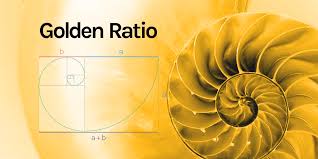
The Golden Ratio, also known as the divine proportion, is a mathematical concept that is found in many aspects of nature, art, and architecture. It is a ratio of approximately 1.618:1, and is believed to be aesthetically pleasing to the human eye. In the context of beauty, the golden ratio has been used to describe the ideal proportions of the face and body, with features such as the length of the nose, the width of the eyes, and the distance between the eyes and mouth said to conform to this ratio.
The Pareto Principle, also known as the 80/20 rule, is a concept that suggests that 80% of the effects come from 20% of the causes. In the context of beauty, this principle has been applied to the idea that 20% of one’s physical appearance accounts for 80% of their perceived attractiveness. This may include factors such as facial symmetry, clear skin, healthy hair, and good posture.

Overall, these concepts suggest that beauty is not only subjective but also linked to mathematical patterns and principles found in nature. While not everyone may conform to these ideal ratios and proportions, these can still be helpful in understanding and appreciating the beauty around us.
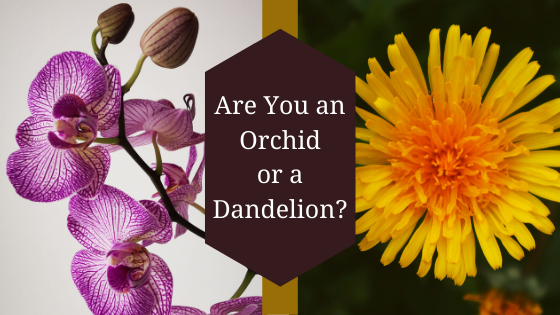
20/ 80 Ratio The mechanical engineer, Adrian Bejan, at Duke University has offered an evolutionary explanation based on the eye and the brain for why the human brain appreciates beauty and why we find the golden ratio so appealing. Bejan argues that the eye and brain would have evolved to maximize the ease of flow from the visual plane to the brain. If we consider a rectangle, the time for the eye to scan the area of the rectangle is smallest when the eye can scan the horizontal length in the same time it takes to scan the vertical. After doing an analysis of the geometry of the eye, Bejan finds that the eye scans in the horizontal direction about 1.5 times as fast as in the vertical direction. Thus, the optimal value of the ratio, which minimizes the time to scan the entire rectangle, is about 3/2, not far from the golden ratio.
He has proposed that the human brain has evolved to recognize patterns and shapes that are efficient in terms of the movement of energy and materials, and that this has led us to find certain natural forms, such as the spiral of a seashell or the curve of a tree branch, to be beautiful.
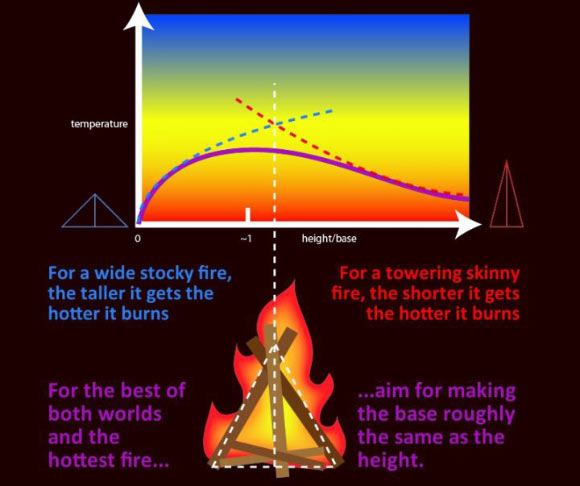
Bejan’s theory is based on his constructal law, which states that “for a finite-size system to persist in time (to live), it must evolve in such a way that it provides easier access to the imposed currents that flow through it.” Essentially, this means that natural systems, including the human body and brain, are constantly evolving to be more efficient at moving energy and materials through them.
According to Bejan, the human brain has evolved to appreciate certain patterns and shapes because they are efficient in terms of energy and material flow. For example, the spiral of a seashell is a very efficient shape for channeling fluids, and the curve of a tree branch is an efficient shape for supporting the weight of leaves and fruit. Our brains have therefore evolved to recognize these shapes as beautiful because they are associated with efficiency and the optimization of energy and material flow.
In summary, Bejan’s theory suggests that the human brain appreciates beauty because it has evolved to recognize patterns and shapes that are efficient in terms of the movement of energy and materials. This theory provides an evolutionary explanation for why we find certain natural forms to be beautiful and suggests that beauty is linked to the optimization of natural systems

Natural Beauty
Humans often find natural beauty particularly awe-inspiring and captivating. Natural beauty can refer to a wide range of phenomena, including landscapes, wildlife, natural structures like mountains and waterfalls, and even the night sky. Natural beauty can evoke feelings of wonder, humility, and connection to the world around us.
One reason why humans may be drawn to natural beauty is because it represents a sense of harmony and balance that we find soothing and rejuvenating. It can also provide a sense of perspective, reminding us of our place in the larger universe and the interconnectedness of all living things. In addition, exposure to nature and natural beauty has been shown to have a variety of health benefits, including reducing stress, improving mood, and enhancing cognitive function.
Overall, natural beauty is a source of inspiration and solace for many people, and its enduring appeal reflects our deep-seated need for connection to the natural world.

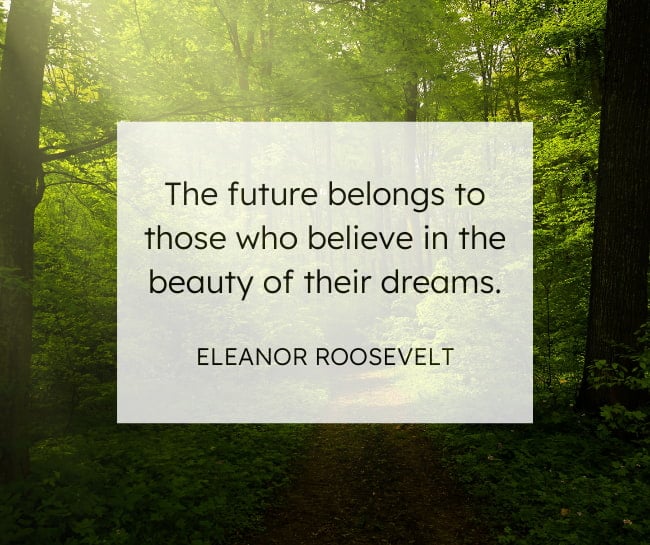
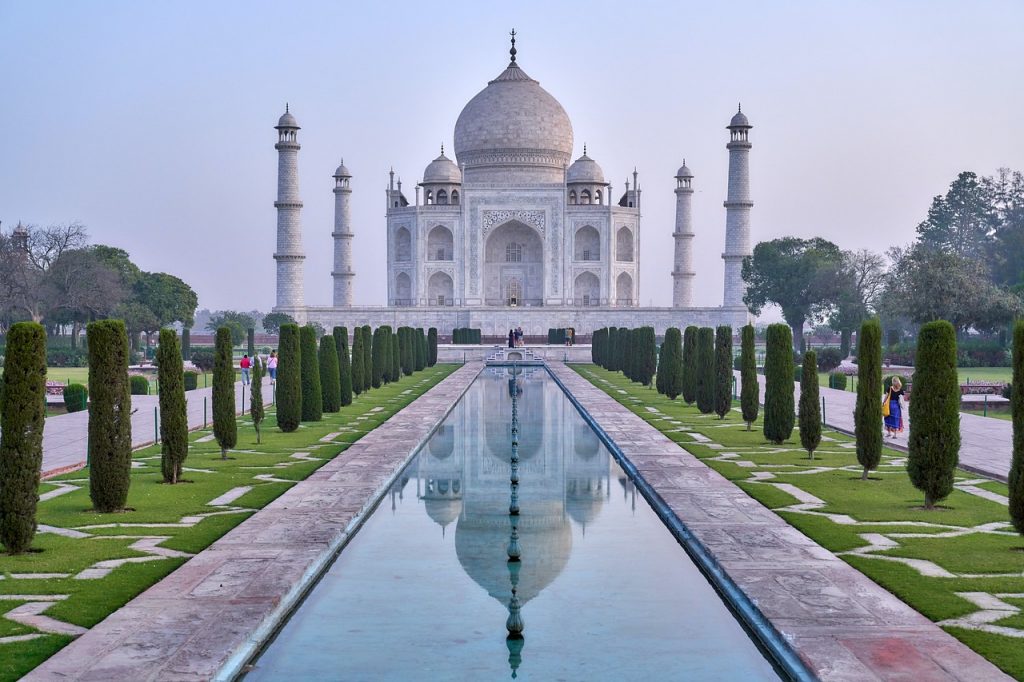
The Most Beautiful Architecture Humans Ever Created
It is certainly true that nature is a remarkable technologist, having developed an incredible array of complex and efficient systems through the processes of evolution and adaptation. From the intricacies of the human body to the complexities of ecosystems, the natural world provides endless examples of technological innovation and efficiency.
In addition, beauty can be seen as a dynamic force in the natural world, as it often plays an important role in shaping and defining the environment. For example, the coloration and patterning of animals can serve as a form of communication or camouflage, while the intricate structures of plants can serve as mechanisms for reproduction or survival.
Beauty can also be a powerful force in shaping human attitudes and behaviors toward the natural world. When we find natural landscapes or wildlife to be beautiful, we are more likely to value and protect them, recognizing their intrinsic worth and importance to our well-being and survival.
Overall, the relationship between nature, technology, and beauty is complex and multifaceted, reflecting the intricate and dynamic interplay between these fundamental aspects of the world around us.

‘The Road Not Taken’ ( by Robert Frost) and the triadic Satyam- Shivam- Sundrum can you give a detailed description of this expression The phrase “Satyam, Shivam, Sundaram” is a triadic expression from the Sanskrit language that is often used in Hindu philosophy and spirituality. It can be translated to mean “truth, goodness, and beauty” or “reality, consciousness, and bliss.” Here is a detailed description of each term:
1- Satyam: Satyam refers to truth or reality. It is the quality of being genuine, authentic, and in alignment with the way things really are. In Hindu philosophy, truth is often considered to be the ultimate reality that underlies all of existence. This includes not only objective facts about the world, but also subjective experiences and spiritual truths.
2- Shivam: Shivam refers to goodness or consciousness. It is the quality of being aware, awake, and in tune with the divine consciousness that permeates all of existence. In Hindu philosophy, consciousness is often considered to be the ultimate reality that gives rise to all of existence. This includes not only human consciousness, but also the consciousness of other beings, and the consciousness of the universe itself.
3- Sundaram: Sundaram refers to beauty or bliss. It is the quality of being aesthetically pleasing, harmonious, and joyful. In Hindu philosophy, beauty is often considered to be a manifestation of the divine, a reflection of the perfect order and harmony of the universe. Beauty is seen as a source of joy and inspiration that can help us connect with the divine and transcend the limitations of the material world.
Together, Satyam, Shivam, and Sundaram represent the triadic ideal of truth, goodness, and beauty. They are seen as interdependent and interconnected aspects of the ultimate reality, and are considered to be important goals for spiritual seekers and practitioners. By cultivating these qualities within themselves and in the world around them, individuals can attain a deeper understanding of the nature of existence and a greater sense of connection to the divine.

It is believed that our brains do perceive beauty as a safe, secure, and beneficial opportunity. When we encounter something that we find beautiful, our brains release a chemical called dopamine, which is associated with pleasure and reward. This release of dopamine can create a sense of well being and positive emotions, such as happiness and contentment.
This positive response to beauty may be linked to our evolutionary history, as it would have been advantageous for our ancestors to seek out safe and beneficial opportunities in their environments. For example, a beautiful and bountiful landscape might have provided a good source of food and shelter, while a beautiful mate might have signaled genetic health and reproductive fitness.
In addition to this evolutionary perspective, there is also evidence that our brains are wired to perceive certain visual and auditory stimuli as beautiful, such as symmetrical and proportionate shapes, harmonic tones, and vibrant colors. These stimuli can activate specific areas of the brain associated with reward and positive emotions, such as the orbitofrontal cortex and the amygdala.
Overall, while our perception of beauty may be influenced by cultural and personal factors, there is a strong evidence to suggest that our brains do perceive beauty as a safe, secure, and beneficial opportunity, and that this perception can have a powerful impact on our emotions and behavior.
Cultural Standards Of Beauty In Historical Perspective
*The practice of foot binding *
In ancient China, the practice of foot binding was widespread among upper-class women, and it was considered a symbol of beauty and social status. Foot binding involved breaking and binding the toes of young girls in order to prevent their feet from growing to their full size, resulting in a deformed and highly painful foot that was just a few inches long.
The practice of foot binding was originally developed during the Tang dynasty (618-907) and became more widespread during the Song dynasty (960-1279). It was thought to have originated from the desire to imitate the court dancer Yao Niang, who was said to have small, delicate feet that made her movements more graceful. Over time, foot binding became a way for women to conform to the beauty standards of the time, as small feet were seen as a sign of refinement and elegance.
Despite the pain and health problems associated with foot binding, the practice persisted for over a thousand years in China, and was only officially banned in 1912 by the Republic of China government. Today, foot binding is widely recognized as a harmful and oppressive practice, and efforts are being made to preserve the cultural heritage of China without promoting or glorifying this aspect of its history.

**In some African cultures, long necks and thick lips were considered to be the standards of beauty. **It may or may not be in practice today, it is true that in some African cultures, long necks and thick lips have been considered standards of beauty. For example, in some ethnic groups in East Africa, such as the Maasai and the Samburu, women traditionally wear neck rings or necklaces that elongate their necks, which is seen as a sign of beauty and social status. In other parts of Africa, fuller lips and wider noses are also considered attractive and are seen as a sign of health and vitality.
It is important to note, however, that beauty standards in Africa, as in other parts of the world, are diverse and constantly evolving. While some traditional practices such as neck elongation and lip plates may still be practiced in some parts of Africa, they are not necessarily seen as universally desirable or fashionable among all African communities. Additionally, as African societies have become more globalized and connected with the rest of the world, Western beauty standards have become more influential in shaping perceptions of beauty.
Overall, the concept of beauty is highly subjective and culturally constructed, and can vary widely across different societies and time periods. While long necks and thick lips have been considered beautiful in some African cultures, there is no single standard of beauty that applies to all African people or cultures. Beauty standards in Africa, as in other parts of the world, are complex and multifaceted, and reflect a wide range of cultural, historical, and social influences.
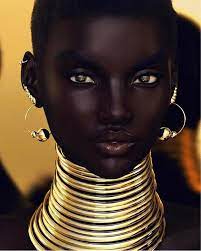
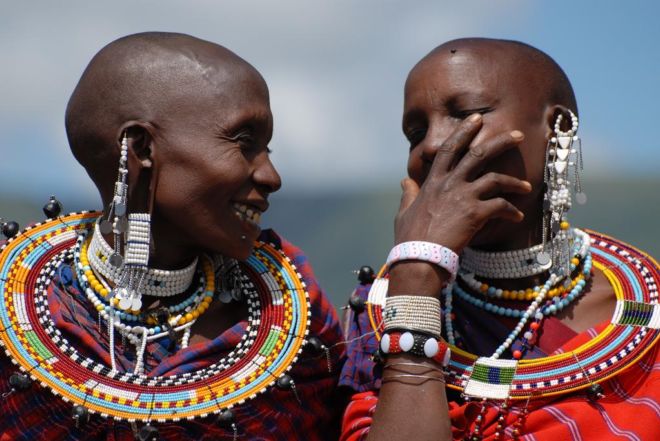
When did the long neck and/or thick lips traditions originate?
The origins of the long neck and thick lips beauty traditions in Africa are not fully known, as they have been practiced for many generations and predate written historical records. However, anthropologists and historians have studied these practices and have some theories about their origins.
The practice of neck elongation, which is also known as neck stretching or neck rings, is thought to have originated in Southeast Asia and spread to other parts of the world through migration and trade. In Africa, neck elongation is primarily associated with the Maasai and Samburu peoples of Kenya and Tanzania, who wear beaded necklaces and brass coils around their necks to create the appearance of a longer, more slender neck. The practice is thought to have originated as a way to protect women from neck injuries during warfare, and later became associated with ideas of beauty and social status.
Thick lips, on the other hand, are a naturally occurring physical trait that is more common in people of African descent than in other populations. In African cultures, fuller lips are often associated with health, fertility, and vitality, and are considered an attractive feature for both men and women. It is possible that this association with good health and fertility contributed to the idea that full lips are a sign of beauty.
It is important to note that these beauty practices and perceptions are specific to certain cultures and do not necessarily reflect the opinions of all African people. Beauty standards are constantly evolving and influenced by a wide range of social, cultural, and historical factors.
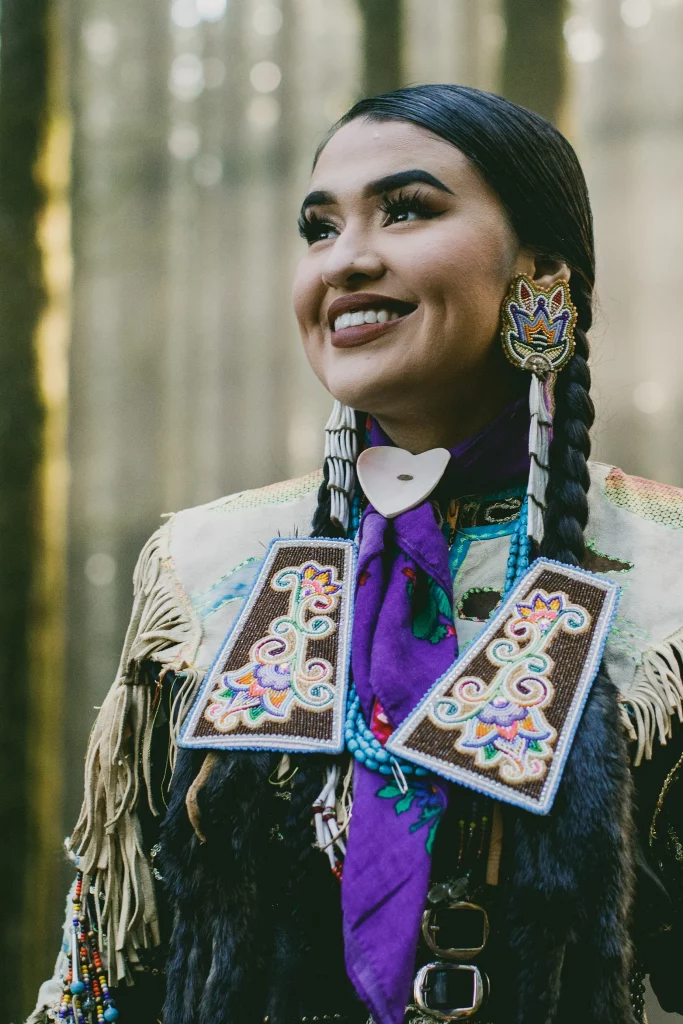
A few examples of beauty standards in some other cultures and the stories behind them:
1- Japan: In Japan, a pale complexion has traditionally been considered a sign of beauty, as it was associated with nobility and wealth. Women would use white powder made from rice or lead to lighten their skin and enhance their appearance. This practice dates back to the Heian period (794-1185), when Japanese women’s beauty was admired for its purity, delicacy, and restraint.
2- India: In India, fair skin has long been associated with beauty and social status, as it was seen as a sign of being of higher caste and having a more privileged lifestyle. This preference for lighter skin has led to a large market for skin whitening products in India. However, there are also many Indians who value darker skin tones, particularly in regions where the sun is strong, as tanned skin is seen as a sign of hard work and a connection to the land.

3- West Africa: In many West African cultures, fuller figures are considered attractive and a sign of good health and fertility. This is particularly true in countries such as Ghana and Nigeria, where women with curvier bodies are often seen as more desirable. This preference for fuller figures may have originated as a way to ensure that women were healthy and able to bear children, and has been reinforced by the influence of West African music and dance, which often features women with curvy and voluptuous bodies.
4- South Korea: In recent years, South Korea has become known for its emphasis on beauty and appearance, particularly among young people. One of the most popular beauty standards in South Korea is the “double eyelid,” which is a crease in the upper eyelid that makes the eyes look larger and more defined. This preference for double eyelids has led to a booming industry in cosmetic surgery, as many young Koreans seek to alter their appearance to conform to this beauty standard.
It’s important to note that beauty standards are constantly evolving and can be influenced by a wide range of factors, including cultural and historical trends, social norms, and individual preferences. What is considered beautiful in one culture may not be seen as attractive in another, and there is no universal standard of beauty that applies to everyone.

Native American cultures have a diverse range of beauty standards and practices,
There are many different tribes and cultures across North America with their own unique traditions and beliefs. Here are a few examples of beauty standards in Native American cultures:
1- Navajo: In Navajo culture, beauty is often associated with balance and harmony. The ideal body shape is considered to be slender and athletic, with a straight back, narrow hips, and long legs. The face is seen as the most important feature, and a symmetrical face with high cheekbones and almond-shaped eyes is considered attractive. Additionally, long, flowing hair is often seen as a sign of beauty and femininity in Navajo culture.
2-Hopi: The Hopi people of the southwestern United States believe that inner beauty is more important than outward appearance. They value humility, kindness, and respect for others as the most important qualities in a person. However, traditional Hopi jewelry, which is often made of silver and turquoise, is highly valued and can be seen as a sign of beauty and social status.
**3- ** Cherokee: The Cherokee people of the southeastern United States place a high value on natural beauty and physical fitness. They believe that the body is a sacred vessel that should be treated with respect and care. Traditional Cherokee hairstyles for women often feature long, straight hair with a center part, which is seen as a symbol of spiritual connection.
4 – Inuit: In Inuit culture, beauty is often associated with practicality and functionality. Traditional Inuit clothing, which is made of animal hides and furs, is designed to keep people warm and protected in harsh Arctic environments. However, these garments can also be highly decorative, with intricate patterns and designs that are unique to each family or clan.
Overall, beauty standards in Native American cultures are often tied with broader cultural values and beliefs, such as respect for nature, community, and spirituality.
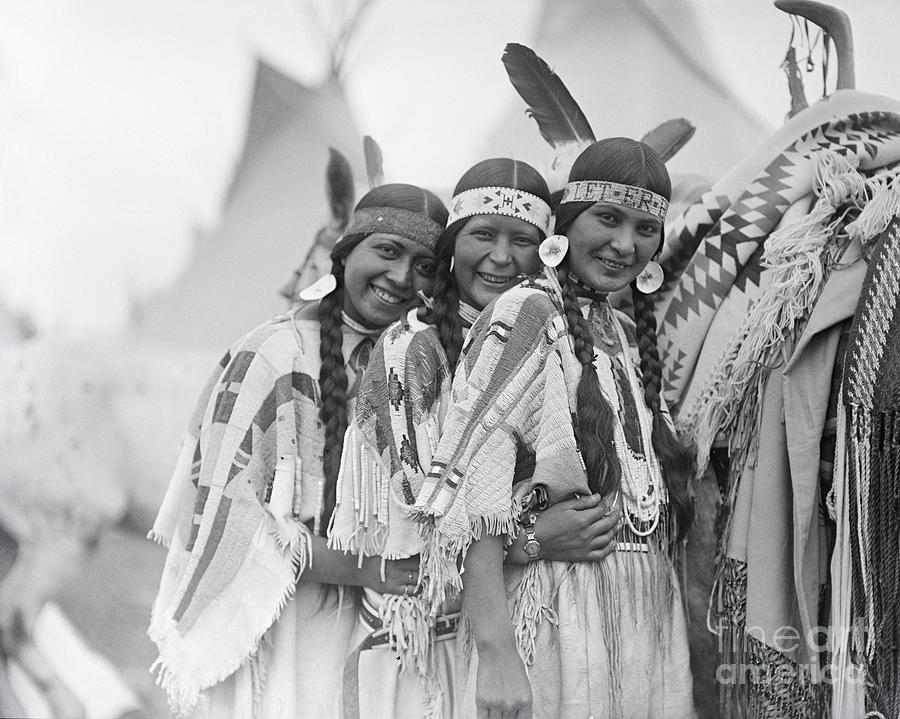
Describing inner beauty in humans or cultures can be difficult, as it is often intangible and subjective. However, here are a few qualities that are commonly associated with inner beauty:
When it comes to describing the inner beauty of culture, similar qualities, like the inner beauty of individual, can apply. A culture that values kindness, integrity, wisdom, creativity, and resilience is often seen as having a rich and meaningful inner life. Additionally, cultures that place a high value on community, spirituality, and respect for a nation.
Overall, all these qualities reflect a deep sense of inner strength, compassion, and wisdom, and are often seen as beautiful in both individuals and cultures.


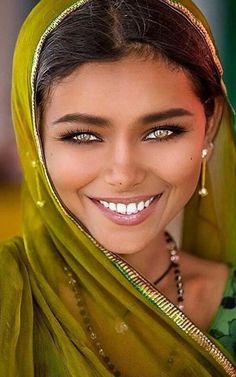
**When the Outer and the Inner Beauty Harmonize, **it can be a powerful combination that creates a sense of balance, authenticity, and radiance.
**Outer beauty **refers to a person’s physical appearance, which can include features such as facial symmetry, skin tone, and body shape. When a person takes care of their physical health, dresses in a way that reflects their personality and style, and uses makeup and grooming to enhance their natural beauty, they can project a sense of confidence and self-assurance that is attractive to others.
Inner beauty, on the other hand, refers to a person’s character, values, and personality. When a person has qualities such as kindness, compassion, intelligence, and humor, they can project a sense of warmth and authenticity that draws people to them.
When these two types of beauty harmonize, it can create a powerful sense of attraction and charisma. For example, a person who is physically attractive but lacks inner depth may initially attract others, but may ultimately be seen as shallow or uninteresting. Conversely, a person who is not conventionally attractive but has a strong sense of inner beauty can be very appealing to others due to their authenticity, kindness, and wisdom.
In short, when outer and inner beauty are in harmony, it can create a sense of balance, radiance, and magnetism that is attractive to others and inspiring to be around.
Black is Beautiful Movement
“Black is Beautiful” is an affirmation that seeks to counter the historical prejudice and discrimination against people with dark skin tones. The phrase emerged during the African-American civil rights movement of the 1960s, as a way to challenge the dominant beauty standards that upheld lighter skin tones and Eurocentric features as the ideal.
From a cultural perspective, the idea that “black is beautiful” represents a powerful assertion of pride and self-love in the face of systemic oppression and marginalization. It is a rejection of the notion that beauty is a fixed, objective standard, and a recognition that different cultures and communities have their own unique expressions of beauty.
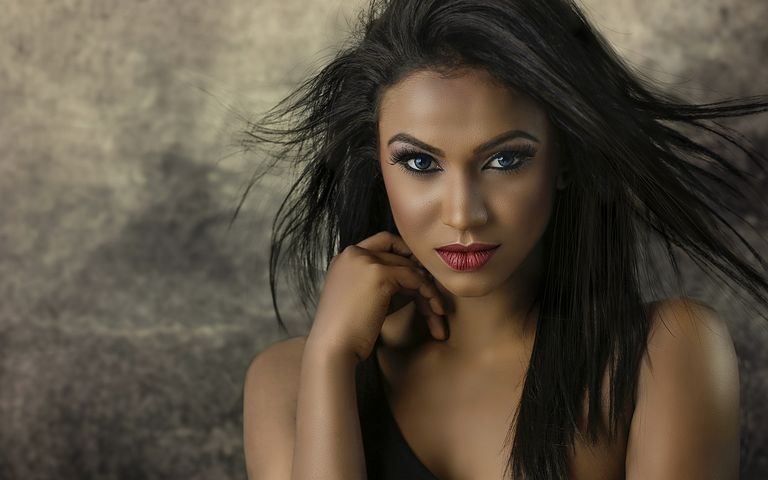
From a scientific perspective, the notion that “black is beautiful” also has some basis in reality. There is evidence to suggest that certain physical features that are more commonly found in people of African descent, such as broader noses, fuller lips, and darker skin tones, are seen as beautiful and desirable in other cultures as well. Additionally, research has shown that people of all races tend to rate faces with more symmetrical features as more attractive, regardless of skin color.
However, it is also important to recognize that the concept of beauty is subjective and culturally constructed, and that there is a wide range of physical features that are considered beautiful across different cultures and time periods. Ultimately, the statement “black is beautiful” is a statement of affirmation and empowerment, seeking to challenge the dominant beauty standards and promote greater acceptance and celebration of diversity.
08:40
** **
